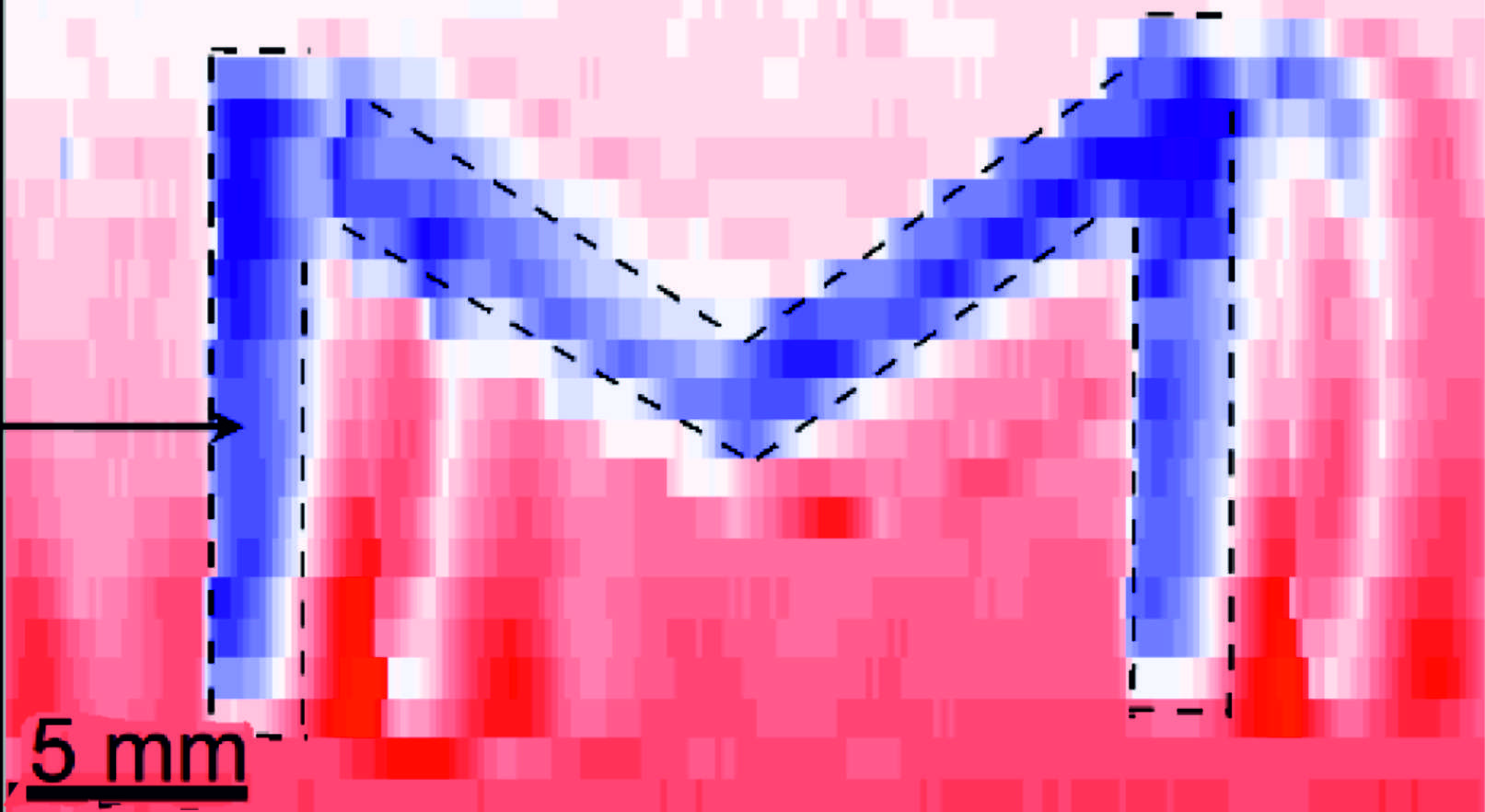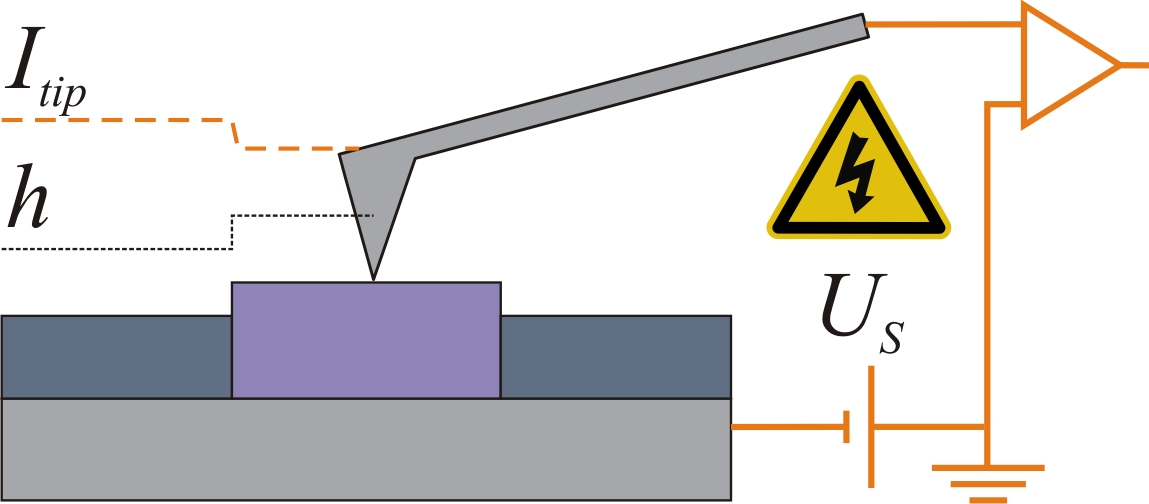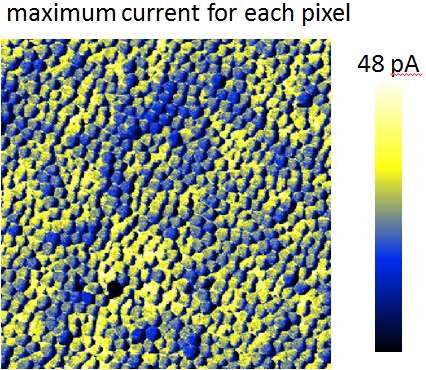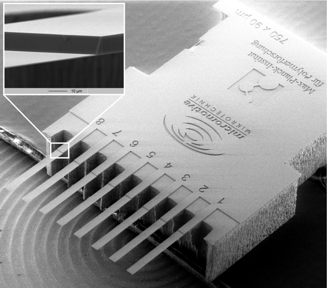Friction force measurements of drops
 The DoFFI is a suitable tool for characterizing friction forces on hydrophobic surfaces. In particular, a 2-dimensional
scanning of the samples allows us to resolve different wetting phenomena of surfaces spatially. Thus, DoFFI is a
novel scanning probe method, named scanning drop friction force instrument (sDoFFI) [3]. In sDoFFI the drop acts as the probe.
sDoFFI is applicable for quality control of surfaces made by large-scale industrial processes. The close sDoFFI map shows the
friction force resultig from a M-feature made by CVD of OTS and PFOTS molecules. For more details visit the
DoFFI homepage.
The DoFFI is a suitable tool for characterizing friction forces on hydrophobic surfaces. In particular, a 2-dimensional
scanning of the samples allows us to resolve different wetting phenomena of surfaces spatially. Thus, DoFFI is a
novel scanning probe method, named scanning drop friction force instrument (sDoFFI) [3]. In sDoFFI the drop acts as the probe.
sDoFFI is applicable for quality control of surfaces made by large-scale industrial processes. The close sDoFFI map shows the
friction force resultig from a M-feature made by CVD of OTS and PFOTS molecules. For more details visit the
DoFFI homepage.
We used DoFFI to investigate the "static" and a "kinetic" regime of
sliding drops [4] and
to characterize
charging of sliding drops and study
the interaction between transport and wetting processes within
the collaborative research center 1194.
Recently,
we investigated how contamintations are removed from surfaces by sliding drops. We monitored the removal of individual contaminant particles
on the micron scale by confocal microscopy while drops are kept in position by DoFFI. We correlate the space- and time-resolved information
with measurements of the lateral friction force of the sliding drop [5].
In a recent study we show that DoFFI is a better alternative to characterize material properties compared to measurements of the onset of
motion, e.g. by tilted plane. The reason is that the static friction force can be tuned by over 30% by pre-shaping the drop.
In contrast to static friction, kinetic friction is independent of pre-shaping the drop, i.e. the drop history [6].
References:
[1] Dynamic Measurement of the Force Required to Move a Liquid Drop on a Solid Surface,
D. W. Pilat et al.,
Langmuir (2012).
[2] Pinning forces of sliding drops at defects,
A. Saal et al.,
Europhys. Lett. (2022).
[3] Scanning Drop Friction Force Microscopy,
Chirag Hinduja et al.,
Langmuir (2022).
[4] How drops start sliding over solid surfaces,
Nan Gao et al.,
Nature Physics (2018).
[5] When and how self-cleaning of superhydrophobic surfaces works,
F. Geyer et al.,
Science Advances (2020).
[6] Tuning drop friction,
Alexandre Laroche et al.,
Droplet (2023).


